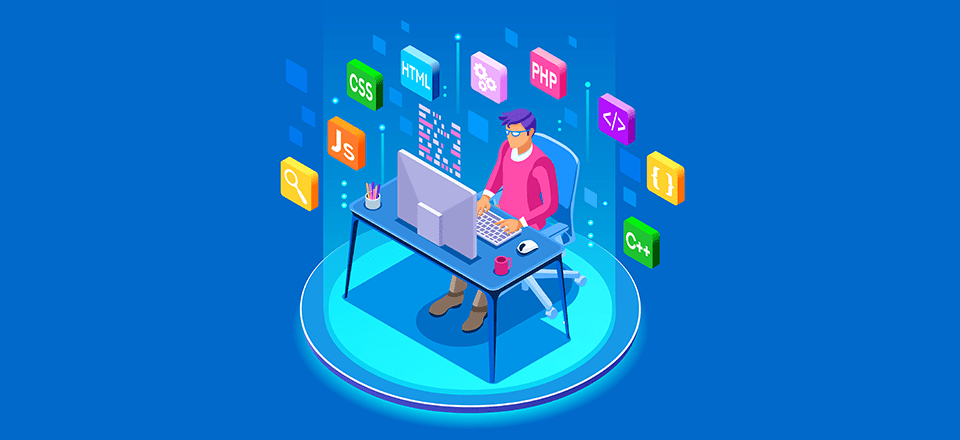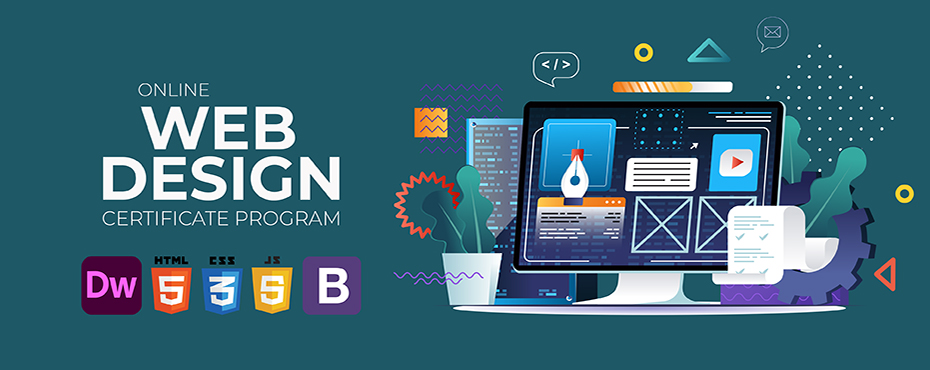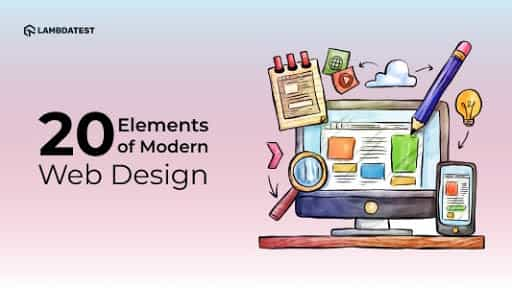All Categories
Featured
Table of Contents
- – St Louis Seo Company - St Louis Web Design And...
- – Web Development Bachelor's Degree - Full Sail...
- – Web Design - Linkedin Learning, Formerly Lynd...
- – Custom Web Design, Development & Digital Mark...
- – Powderkeg: Web Design Madison, Wi Tips and Tr...
- – Learning Web Design: A Beginner's Guide To Ht...
- – What Is A Web Designer? (2022 Guide) - Brain...
- – Web Design Company In Orlando, Florida And B...
- – Web Design Tutorials By Envato Tuts+ Tips an...
- – Web Design Vs. Web Development - Upwork Tips...
- – Web Design - Wikipedia Tips and Tricks:
St Louis Seo Company - St Louis Web Design And Internet ... Tips and Tricks:
Quick summary Use and the energy, not the visual style, determine the success or failure of a website. Because the visitor of the page is the only individual who clicks the mouse and for that reason decides whatever, user-centric design has established as a basic approach for effective and profit-oriented web style - web design frederick md.
and the utility, not the visual style, figure out the success or failure of a site. Given that the visitor of the page is the only person who clicks the mouse and therefore decides whatever, user-centric design has ended up being a basic approach for successful and profit-oriented web style. If users can't utilize a feature, it may as well not exist.
g. where the search box need to be placed) as it has actually currently been done in a number of short articles; rather we concentrate on the techniques which, used correctly, can result in more advanced style choices and simplify the process of viewing provided details. Please notice that you might be thinking about the usability-related articles we have actually released prior to: Principles Of Great Site Design And Reliable Web Design Guidelines, In order to utilize the concepts appropriately we initially require to understand how users communicate with websites, how they think and what are the standard patterns of users' habits.
Web Development Bachelor's Degree - Full Sail University Tips and Tricks:
Visitors glance at each new page, scan some of the text, and click on the first link that catches their interest or slightly resembles the important things they're looking for. In fact, there are large parts of the page they do not even look at. A lot of users look for something interesting (or useful) and clickable; as quickly as some promising candidates are found, users click.
If a page supplies users with top quality content, they want to compromise the content with ads and the style of the website. This is the factor why not-that-well-designed websites with high-quality content acquire a lot of traffic over years. Material is more vital than the design which supports it.

Users don't read, they scan. Notice how "hot" areas abrupt in the middle of sentences. This is normal for the scanning procedure. Very basic concept: If a website isn't able to fulfill users' expectations, then designer stopped working to get his job done properly and the company loses cash. The higher is the cognitive load and the less user-friendly is the navigation, the more ready are users to leave the site and look for alternatives.
Web Design - Linkedin Learning, Formerly Lynda.com Tips and Tricks:
Neither do they scan website in a direct fashion, going sequentially from one site section to another one. Instead users satisfice; they pick the first affordable option. As quickly as they find a link that appears like it might cause the objective, there is a really great chance that it will be right away clicked.
It does not matter to us if we understand how things work, as long as we can utilize them. If your audience is going to imitate you're designing billboard, then style fantastic signboards." Users desire to be able to control their web browser and rely on the constant information presentation throughout the site.
If the navigation and site architecture aren't user-friendly, the number of enigma grows and makes it harder for users to comprehend how the system works and how to obtain from point A to point B. A clear structure, moderate visual ideas and easily recognizable links can help users to find their course to their goal.
Custom Web Design, Development & Digital Marketing ... Tips and Tricks:

claims to be "beyond channels, beyond items, beyond distribution". What does it indicate? Given that users tend to check out websites according to the "F"-pattern, these 3 declarations would be the first elements users will see on the page once it is packed. Although the style itself is simple and user-friendly, to comprehend what the page is about the user requires to search for the response.
Once you have actually attained this, you can interact why the system is beneficial and how users can benefit from it. Do Not Waste Users' Persistence, In every task when you are going to offer your visitors some service or tool, attempt to keep your user requirements very little.
First-time visitors are willing to, not filling long web forms for an account they might never ever use in the future. Let users check out the website and find your services without forcing them into sharing private data. It's not affordable to require users to go into an e-mail address to evaluate the function.
Powderkeg: Web Design Madison, Wi Tips and Tricks:
And that's what you desire your users to feel on your web website. The registration can be done in less than 30 seconds as the form has horizontal orientation, the user does not even need to scroll the page.
A user registration alone suffices of an obstacle to user navigation to reduce inbound traffic. 3. Manage To Focus Users' Attention, As websites offer both fixed and vibrant content, some elements of the interface bring in attention more than others do. Undoubtedly, images are more distinctive than the text simply as the sentences marked as vibrant are more appealing than plain text.
Focusing users' attention to specific locations of the site with a moderate use of visual components can assist your visitors to get from point A to point B without thinking of how it really is supposed to be done. The less enigma visitors have, the they have and the more trust they can develop towards the business the website represents.
Learning Web Design: A Beginner's Guide To Html, Css ... Tips and Tricks:
4. Make Every Effort For Feature Direct exposure, Modern website design are typically slammed due to their technique of directing users with aesthetically appealing 1-2-3-done-steps, large buttons with visual results and so on. From the style perspective these aspects actually aren't a bad thing. On the contrary, such as they lead the visitors through the website content in a very simple and user-friendly method.
The website has 9 main navigation options which are visible at the first look. The option of colors might be too light, though. is a basic principle of successful interface design. It doesn't really matter how this is achieved. What matters is that the material is well-understood and visitors feel comfy with the way they communicate with the system.
com gets straight to the point. No cute words, no exaggerated statements. Rather a rate: simply what visitors are searching for. An optimum option for reliable writing is touse short and concise phrases (come to the point as quickly as possible), usage scannable layout (categorize the material, utilize multiple heading levels, use visual components and bulleted lists which break the circulation of uniform text blocks), usage plain and objective language (a promo does not require to sound like advertisement; provide your users some sensible and objective reason they should utilize your service or stay on your site)6.
What Is A Web Designer? (2022 Guide) - Brainstation® Tips and Tricks:
Users are seldom on a site to delight in the style; moreover, in most cases they are trying to find the info despite the design - web design frederick md. Aim for simpleness rather of complexity. From the visitors' viewpoint, the very best site style is a pure text, without any advertisements or further content blocks matching precisely the question visitors used or the material they've been trying to find.
Finch plainly presents the info about the website and offers visitors an option of options without overcrowding them with unnecessary content. 7. Don't Hesitate Of The White Space, Actually it's actually hard to overstate the significance of white area. Not only does it help to for the visitors, but it makes it possible to view the information presented on the screen.
Complex structures are more difficult to check out, scan, evaluate and work with. If you have the option between separating 2 design segments by a visible line or by some whitespace, it's generally better to use the whitespace solution. (Simon's Law): the better you handle to supply users with a sense of visual hierarchy, the easier your material will be to perceive.
Web Design Company In Orlando, Florida And Bangor, Maine Tips and Tricks:
The very same conventions and rules need to be applied to all elements.: do the most with the least quantity of cues and visual elements. Clarity: all elements should be designed so their significance is not ambiguous.
Conventions Are Our Pals, Traditional style of website aspects does not result in a dull web website. It would be a functionality headache if all websites had different visual presentation of RSS-feeds.
understand what they're anticipating from a site navigation, text structure, search placement etc. A normal example from usability sessions is to equate the page in Japanese (assuming your web users do not know Japanese, e. g. with Babelfish) and offer your usability testers with a job to find something in the page of various language.
Web Design Tutorials By Envato Tuts+ Tips and Tricks:
Test Early, Test Frequently, This so-called TETO-principle ought to be used to every web style project as use tests frequently offer into significant issues and problems related to an offered layout. Test not too late, not too little and not for the incorrect factors.
Some important points to keep in mind: according to Steve Krug, and testing one user early in the job is better than screening 50 near completion. Accoring to Boehm's very first law, errors are most frequent during requirements and style activities and are the more pricey the later they are eliminated.
That indicates that you develop something, test it, fix it and after that test it again. There might be problems which have not been found during the first round as users were virtually obstructed by other issues. usability tests. Either you'll be pointed to the problems you have or you'll be indicated the absence of major style defects which remains in both cases an useful insight for your task.
Web Design Vs. Web Development - Upwork Tips and Tricks:

This holds for designers too. After you have actually worked on a website for few weeks, you can't observe it from a fresh viewpoint any longer. You understand how it is built and therefore you understand precisely how it works you have the knowledge independent testers and visitors of your website would not have.
It can be connected to other areas such as graphic design, user experience, and multimedia arts, but is more aptly seen from a technological viewpoint. It has ended up being a big part of people's daily lives. It is tough to envision the Web without animated graphics, various styles of typography, background, videos and music.

During 1991 to 1993 the World Wide Web was born. Text-only pages might be seen utilizing a basic line-mode browser. There had been no integrated approach to graphic style aspects such as images or noises.
Web Design - Wikipedia Tips and Tricks:
The W3C was produced in October 1994 to "lead the Web to its full capacity by establishing typical procedures that promote its development and ensure its interoperability." This discouraged any one business from monopolizing a propriety web browser and shows language, which could have modified the result of the Internet as a whole.
As this has taken place the innovation of the web has likewise moved on. There have actually likewise been considerable changes in the method people use and access the web, and this has changed how websites are developed.
Learn more about Lovell Media Group LLC or TrainACETable of Contents
- – St Louis Seo Company - St Louis Web Design And...
- – Web Development Bachelor's Degree - Full Sail...
- – Web Design - Linkedin Learning, Formerly Lynd...
- – Custom Web Design, Development & Digital Mark...
- – Powderkeg: Web Design Madison, Wi Tips and Tr...
- – Learning Web Design: A Beginner's Guide To Ht...
- – What Is A Web Designer? (2022 Guide) - Brain...
- – Web Design Company In Orlando, Florida And B...
- – Web Design Tutorials By Envato Tuts+ Tips an...
- – Web Design Vs. Web Development - Upwork Tips...
- – Web Design - Wikipedia Tips and Tricks:
Latest Posts
Web Design - Linkedin Learning, Formerly Lynda.com Tips and Tricks:
Why Is Web Design Important? - 6 Reasons To Invest In Site ... Tips and Tricks:
Design Principles - U.s. Web Design System (Uswds) Tips and Tricks:
More
Latest Posts
Web Design - Linkedin Learning, Formerly Lynda.com Tips and Tricks:
Why Is Web Design Important? - 6 Reasons To Invest In Site ... Tips and Tricks:
Design Principles - U.s. Web Design System (Uswds) Tips and Tricks: